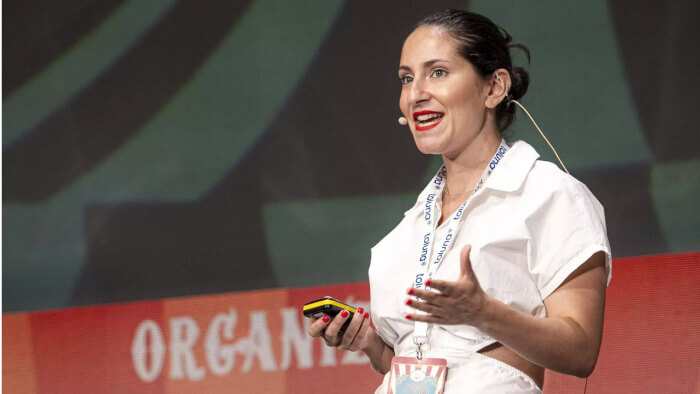Read the practical framework for leveling up your social media team.
Read the practical framework for leveling up your social media team.
Brandwatch is only as good as its people. For them to be at their best, they need a positive and supportive work environment. Working at Brandwatch means flexible working, personal development, and a strong community-focused culture, whether you’re remote or in the office.
37 roles | 7 teams | 15 locations
Bilingual Onboarding Specialist (Spanish speaking)
Customer Success Manager
Customer Success Team Lead - DACH - GERMAN speaking
Customer Support Advisor
Onboarding Specialist
IT Engineer
Site Reliability Engineer
Site Reliability Engineer
Email Marketing Specialist
Field Marketing Manager
Senior Compensation Systems Analyst
Sr. Director, Operations (CoE)
Social Media Consultant - GERMAN speaking - (m/w/d)
Account Executive
Account Executive with Danish
Associate Account Executive
Associate Account Executive
Business Development Representative, Hybrid, Chennai
Director, Inside Sales - North America
Sales Development Representative
Sales Development Representative
Sales Development Representative
Sales Development Representative (Baltic languages & English) - Baltic market
Sales Development Representative (Nordic languages & Dutch)
Sales Development Representative (Norwegian speaker)
Sales Development Representative APAC
Sales Development Representative UKI
Sales Development Representative with Hungarian/ Polish/ Czech and English
Senior Account Manager - LATAM
Solutions Consultant with French and English
Strategic Account Development Representative
Strategic Account Development Representative
Strategic Account Director
Strategic Sales Development Representative
Strategic Sales Development Representative
Who is a better judge of what working at Brandwatch is like than Brandwatchers themselves? Here’s what some of them think about life at Brandwatch in their own words.
Brandwatch has never boxed anyone into a particular role or department, and has always been quick to spot potential in people. I’m proud Brandwatch champions individuality and has helped develop the careers of so many individuals of the years.
Not only does this allow me to be my authentic self, it encourages other tech companies to do the same.
This, combined with the attitude Brandwatch has to challenge and change the status quo in the Engineering industry, is inspiring.
Colleagues go out of their way to help each other out, push forward great ideas, and make our workplace a better place for everyone. Passionate about making Brandwatch the most environmentally sustainable company in our sector, I’ve been given the opportunity to support the creation of an inspiring ESG strategy, giving me a varied and fulfilling career here.
This is amazing for our culture and ripples through to our customers as well. I’m always telling people that I am a better human as a result of working at Brandwatch.
Our committees, groups, and channels are the make-up of Brandwatch’s culture. They keep our people connected, and help to set out Brandwatch’s future.

Dedicated to discussing issues around diversity and inclusion, and what initiatives are needed to improve this at Brandwatch.

Focuses on issues affecting our LGBTQ+ employees, along with organizing internal events and ensuring Brandwatch is a safe space for all.

Aiming to make Brandwatch as green as possible, this group discusses environmental issues related to Brandwatch, and organises events like beach cleans.

A channel for employees to discuss parenting issues and concerns, and to ensure Brandwatch offers the support they need.

A channel for Brandwatchers to discuss the issues women working in technology face, and how best the company can tackle them.

Many Brandwatchers spend their free time creating–whether writing, painting, or crafting–and this is where they can show off their work.

It’s dogs all the way down. From employee-owned canines to internet famous hounds, it’s the home for dog fans at Brandwatch.

Baking is a skill to be celebrated, so any Brandwatchers who want to show off their latest loaves, pastries, and cakes can head here.
— Gemma Joyce, Head of Content, Marketing
Existing customer?Log in to access your existing Falcon products and data via the login menu on the top right of the page.New customer?You'll find the former Falcon products under 'Social Media Management' if you go to 'Our Suite' in the navigation.
Brandwatch acquired Paladin in March 2022. It's now called Influence, which is part of Brandwatch's Social Media Management solution.Want to access your Paladin account?Use the login menu at the top right corner.